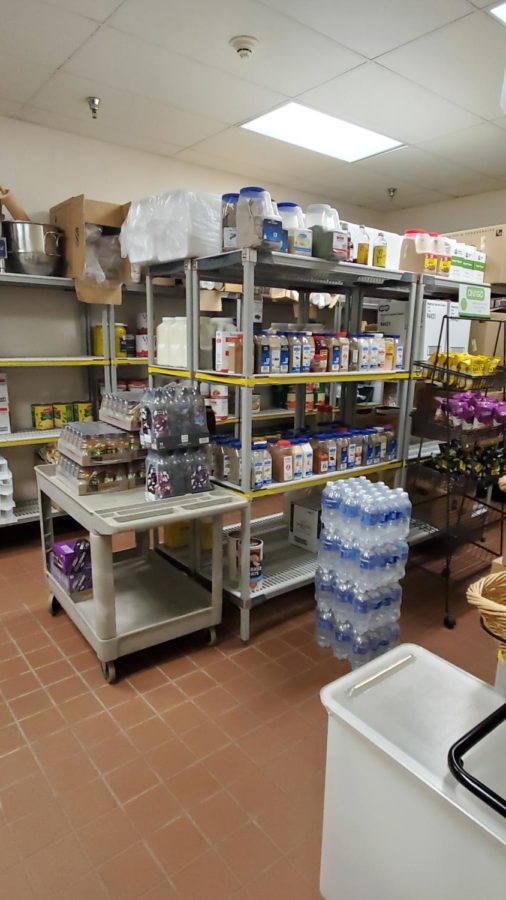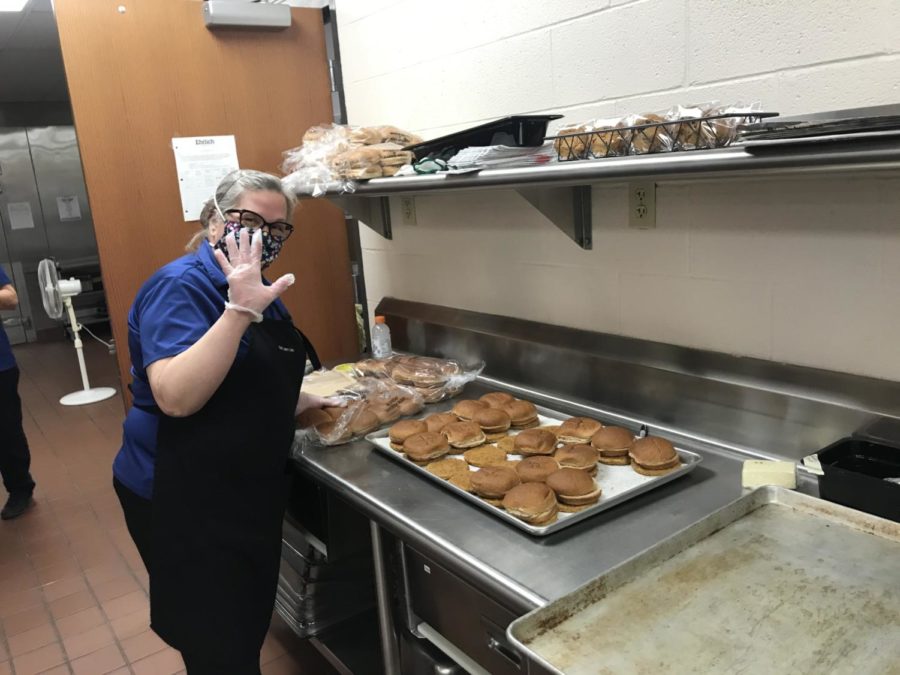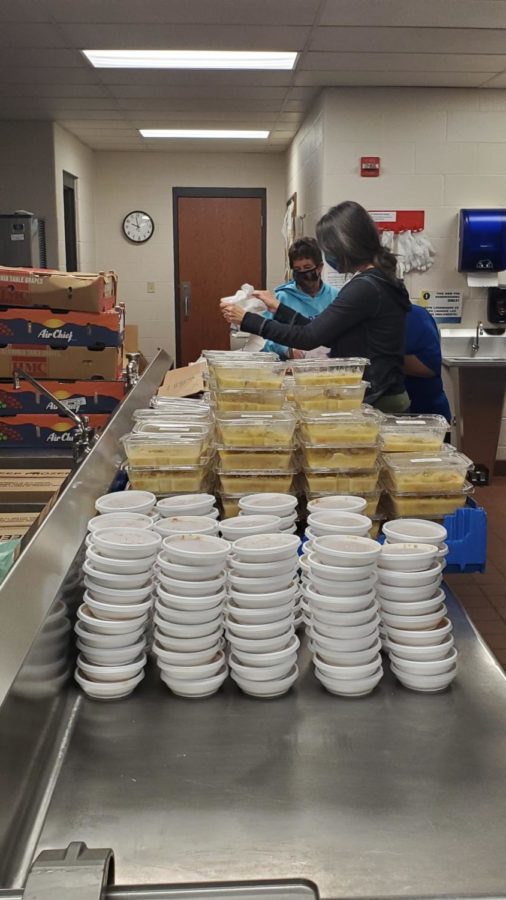The Hunger Games
Behind the Scenes of the Cafeteria
March 17, 2021
A lot goes on behind the walls of the cafeteria, and nobody (including me) puts any thought into what is necessary to prepare about 300 meals each day. We simply go up there, grab stuff, and eat. So what goes on in the kitchen? And most importantly, what happened to vanilla & strawberry milk?
The daily preparations for lunch is usually pretty repetitive, because there are staple foods available for students everyday. The everyday choices that students can pick from are: salads, Bosco Sticks, pizza, chicken patty, peanut butter and jelly Uncrustables, and ham sandwiches.
We never think about where the food comes from either. Cafeteria manager Lynn Humphries places the weekly order for all lunches on Thursdays from the supplier Sysco. Most of the necessary components of a meal are ordered on a weekly basis, like noodles for pasta or nachos. Most supply drop offs occur on Wednesdays this year due to the half days.
All perishable items are kept refrigerated or frozen until the day of use. For example, the ever popular pizzas arrive frozen each week. They are kept frozen until the day they are used.
Produce like fruits and vegetables are delivered multiple times a week to make sure all produce is fresh.
Determining how much food to order/prepare is a difficult task. Humphries said, “I try daily to make enough as to not run out of anything and also not to make too much so that I have a lot of waste. If something is left and can be reused we will either freeze it for another time, serve it the next day such as leftover vegetables or return it to our stock such as milk or juice.”
As some have experienced, if an item was particularly popular a given week, the staff may run out of enough for each lunch. On the other hand, if there are left over food items that could go bad, sometimes the ladies will hand out free extras during the last lunch.
Unfortunately, if an item is perishable and students don’t eat all of it, the staff must throw it away. Humphries notes there is a form she must complete to keep track of waste.
On a given day, there are six staff members preparing our lunches and serving us. Before lunches and between them the staff make sandwiches, salads, and cupped sides. Humphries prepares the main line meal, which is the only one to change daily. Director of Dining Services Karen Graham makes the monthly lunch menu.
Between meals and after, the staff work to clean dishes and serving utensils as well as maintain extra food. They work together to prepare condiments and bagging plasticware and napkins for students each day.
Lunch workers don’t only prepare lunch, they prepare breakfasts for students in the morning as well as pre-bagged breakfasts to pick up at lunch.
Due to Covid, the district provides free meals to students in the community who may completing school through Hybrid or Virtual requirements. As a result, another part of the cafeteria staff’s job has become preparing and bagging meals for Meals to Go. They are also the ones who hand out the bags to a patient line of cars for contact-less pickup.
Meals to Go pick up are on Thursdays from 3 p.m. – 5 p.m. If you or someone you know could benefit from this program please click here.
If we reflect upon the years of lunch service, I’m sure there are many favorites that come to mind, but for many their favorite item was the vanilla and/or strawberry milk. Around the time we were in early elementary school, our vanilla and strawberry milk mysteriously disappeared from our fridges.
In an attempt to understand this change, I asked my lunch lady cashier at the time, “Where is the strawberry milk?” She looked down at me with a grimacing face and said: “Obama”.
While the answer is true, it’s more complicated than that.
In 2010, First Lady Michelle Obama and Agriculture Secretary Tom Vilsack introduced new requirements for school meals. Their goal was to improve student’s eating habits. This change is part of the Healthy, Hunger-Free Kids Act.
The standards are many, too many to list here, but generally they require full servings of nutritious meal components that meet “my plate” (formerly food pyramid) guidelines For more information, visit the US Department of Agriculture page here.
This change also affected our holiday-themed food. Halloween had pumpkin-shaped cookies, during Christmas time, the staff served us Christmas tree cookies, and Thanksgiving offered Jello. The meals were glorious and legendary.
While it’s great that kids are eating healthier, more nutritious meals, many students miss milk selections the cafeteria offered in the past.


